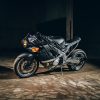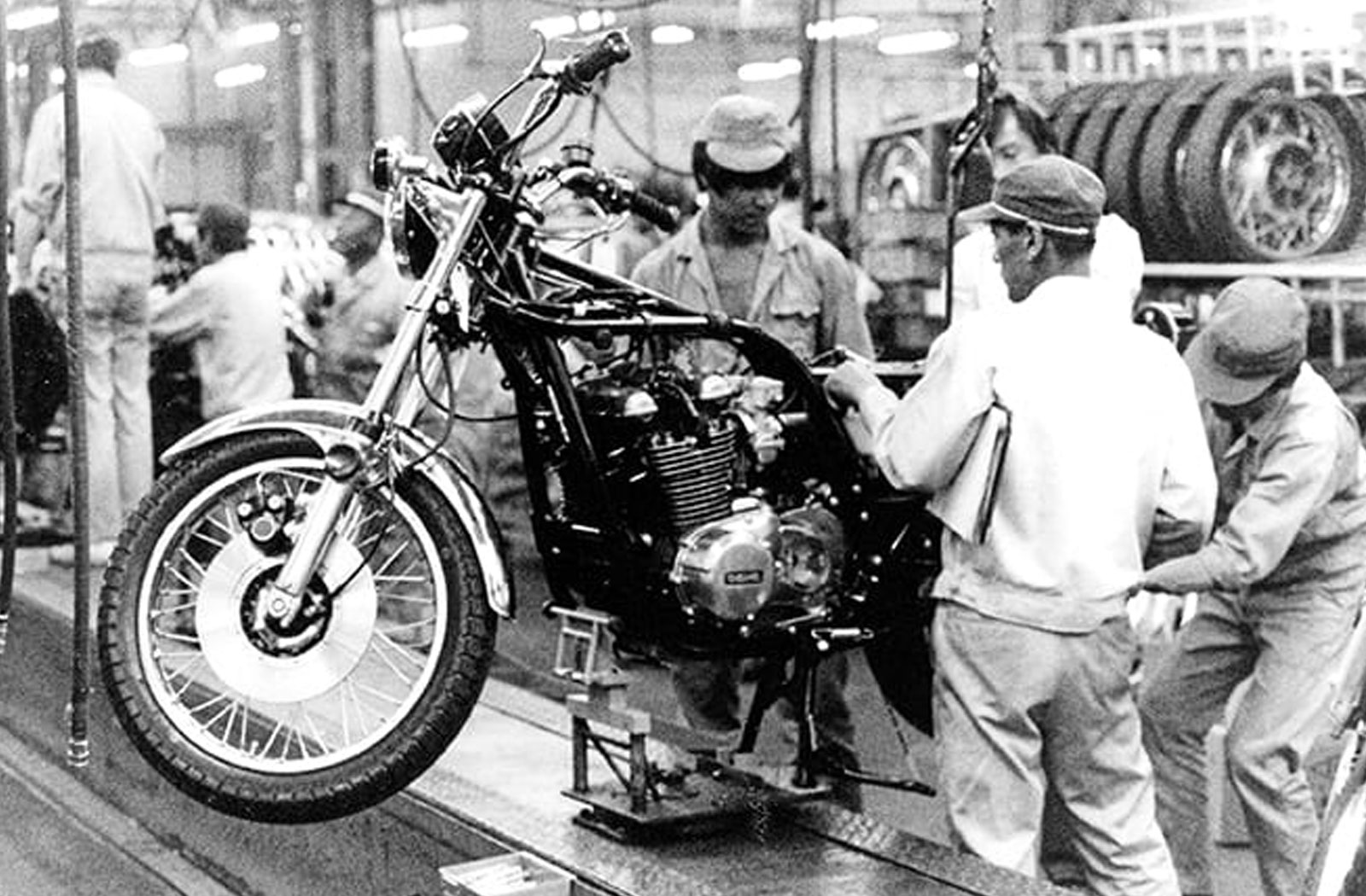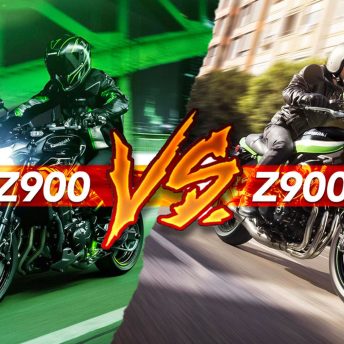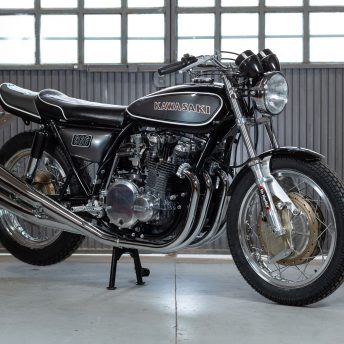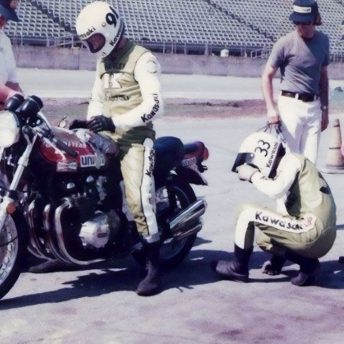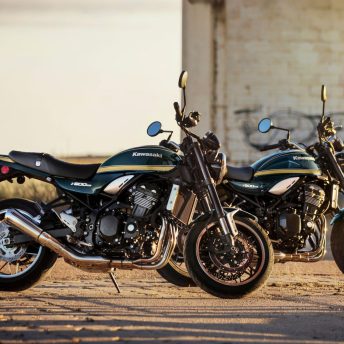2022 marks the 50th anniversary of Kawasaki’s Z series of motorcycles. The motorcycle that started it all, the 1972 Kawasaki Z1, was a huge leap forward in both performance and engineering. So significant was the Z1 that it’s impossible to ignore what it has contributed to modern motorcycles. So, to help celebrate 50 years of Zed, let’s take a look back at how the Kawasaki Z1 came to be…
To understand the Kawasaki Z1 you first have to understand the 1960s. And I don’t mean the civil rights movement or mop-haired Liverpudlian music. You have to understand the motorcycle scene itself.
British manufacturers were punching out oily rattlers. Italian workshops were stripping bolts on passion-fuelled curios and America was making motorised armchairs – a business model they have well and truly stuck to. But the Japanese weren’t making anything inspiring either. Bikes seemed to be either cheap rattly runabouts from Honda or riffs on existing designs. Some were reliable. Some were quick. None were truly genre challenging.
Kawasaki was no exception. They had some really gnarly two-bangers in the pipeline, but their lead four-stroke was the Kawasaki W1 – a bike that couldn’t be more pedestrian if it grew legs and walked.
But big plans were underway. Because Sam Tanegashima knew what the greatest motorcycle in the world was going to be.
The Japanese-American had been engaged by Kawasaki to look at the US and decide what they wanted. The project was dubbed New York Steak. Why the name? Well, Kawasaki figured the best item on any menu in the USA was a New York Steak. And that’s what they wanted the bike to be. The best thing on the menu.
The new world-beating ride was to be a slick 750cc four-stroke inline-four. It was to be fast and reliable and cement Kawasaki’s name in the US as a true world player. But team green didn’t just want to raise the bar of how good a motorcycle would be. They wanted to redefine what a modern bike was. And that would start with the engine.
Dubbed the ‘N600’, the meaty powerplant of the New York Steak was progressing nicely. It was to be a 750cc double-overhead-cam monster of power so reliable it should wear a suit.
A few rooms over, slow work was happening on the body design for the new bike. Direction from the welkin of Kawasaki HQ declared the new bike should embody a three ‘S’ principle – Slim, Sleek and Sexy. What they should have added was another – Speedy. Because all plans stopped at the Tokyo Motorcycle show in 1968. Honda had debuted the CB750 Four.
The CB750 Four was everything the New York Steak wanted to be. It was a four-cylinder, four-stroke, reliable bike with an electric leg and disc brakes. It didn’t need to be started with a tickle of a carb and a deckman’s curse. It was the New York Steak. And it was the first big Japanese bike to catch the US market’s eye.
Things ramped up at Kawasaki HQ.
The N600 engine team went back to work, resolving to not only match Honda’s world-beater but to outperform it. Kawasaki’s DOHC design was refined and the displacement punched up to 900 cubic centimetres. The CDI ignition was refined. The engine was tuned for torque. But as hard as the engineering boffins sweated and bled over the new donk, nobody worked harder than designer Norimasa ‘Ken’ Tada. Because Kawasaki gave him one month to design the bodywork.
After the incomplete plans for the New York Steak were placed under his nose he called his wife, advised her he wouldn’t be home for thirty days and then went to work. On nights and weekends. He burnt so much midnight oil the US wanted to invade his drawing-room.
Norimasa had to adhere to the initial ‘three S’ plan with a focus on a styling design to get American hearts racing. And it couldn’t, under any circumstances, look like a CB750. After thirty bleary-eyed days, Norimosa finally had a design that battalion HQ was happy with. A teardrop tank, a ducktail and a slimline tank made the Z1 into an astonishing-looking ride.
But being the prettiest bike in the world wouldn’t mean squat if it didn’t perform. And the revised N600 engine was promising. The team knew it could put out north of 80 horses and they knew it could belt past the 120mph mark. But they didn’t know how long it could do it for – and if it would survive the kind of riding America was to throw at it.
So the team at Kawasaki shipped a brace of prototypes to the States to see what would happen.
On arriving in LA the two bikes were deftly painted in Honda colours and marked with Honda badges in LA to confuse any onlookers. And then the test riders cut a lap of the US. They rode them on freeways and backroads. In cities, through towns and across the desert. They cut lap after screaming lap at Talladega. And then the bikes were shipped back to Japan to see what needed to be changed.
Thousands of hard miles. Countless hours spent pinned wide open. And the changes? The Zed gained an automatic chain oiler. And that was it.
Production ramped up in Japan and the Z1 became the belle of the ball at its debut at the Cologne motorcycle show in September 1972. Pants tented, knickers dropped, and an entire generation of grease-stained motorcycle lunatics fell in love.
In the space of only a few years, 85,000 units of Kawasaki Z1 were sold around the world. Over the course of a mere few months, it became an icon of engineering and performance.
And against the CB750? The Kawasaki absolutely dominated it. The Kwaka had an extra twenty horses, a stiffer frame, more nimble handling and styling so modern it made the CB look like something your dad would ride.


The Kawasaki Z1 would go on to be beloved by anyone who had shown even a passing interest in motorcycles. It defined both a generation of motorcycles and heralded a new era for Japanese automotive design. Through movies, magazines and drunken stories of tall tales slurred at roadside bars the Z1 became the bike of the 1970s.
And decades on, nothing has changed. The bike is even better looking than when it first debuted. Examples are still running reliably. The bike is still quick. It still handles well. And it’s still, and will forever be, one of the greatest motorcycles ever made.
Story by Marlon Slack | Photography via Kawasaki Motors








